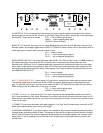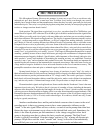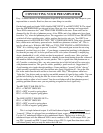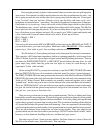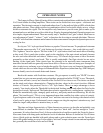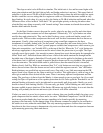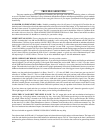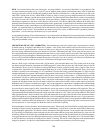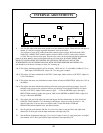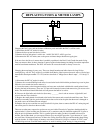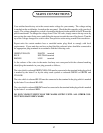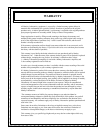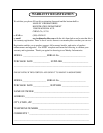HUM - Let's assume it knows the words. Once again - several possibilities - several cures. Most likely it is a ground loop. The
two most common procedures are: try a 3 pin to 2 pin AC adapter (about a dollar at the hardware store) which is better than
messing up the power cable by bending the ground pin until it breaks off. Method two - cutting the shield on one side of the
cable. This is usually done at every female XLR to "break" all loops. You may get a loop simply from the rack. All the other
gear in the rack is "dumping" ground noise onto the rack rails. Try removing the Limiter from the rack so that it is not touching
any metal. You may have cured a non-loop hum. Some gear radiates a magnetic field and some gear (especially if it has
transformers) might receive that hum. A little distance was all it took. This unit has GROUND terminals on the back panel.
Normally these terminals are simply connected together with a "ground strap" (a small flat piece of metal that can become lost).
First check that the strap is connecting the two ground terminals. If missing try a short piece of wire to connect these terminals.
Not that - try separating them, try connecting a wire from the rack to the each terminal, try connecting a wire from the console
to the terminals (one at a time). These terminals are meant to help with a variety of different studio "grounding schemes".
Experiment - you will come up with the best way for your situation.
A cool method of reducing all sorts of hum and noise is to use the new 60-0-60 balanced AC power transformers available from
Equi=Tech and Furman. It costs more but works best. Hum might be because of the unbalanced input but this hints at ground
loops and questionable wiring.
THE METERS ARE OUT OF CALIBRATION - If the problem only seems to be when the unit is just turned on it's normal.
It should warm up. It might be a half dB out for 15 minutes - relax. If they drift a tenth of a dB over the course of a day it is
because of bad AC power fluxuations - chances are other gear is doing worse, you just haven't found out yet. Your unit will
have been factory calibrated and tested twice before you received it. Sometimes parts drift a bit in value over the years, or you
have repaced tubes and want the unit calibrated at the same time, or you just want it as perfect as it can be. These are good reasons
to turn the page and go through the calibration procedure or sent it to a technician or the factory for a tweak. If you send the
unit to a tech, you should include this manual because they will need it. If you do it yourself, you will need an Oscillator and
a few screwdrivers and it would be nice to have a VOM meter and Scope but not necessary.
Once in a while we get a call from a client with a "digital studio" with confusion about levels. They usually start out by using
the digital oscillator from their workstation and finding pegged VU meters the first place they look and they know it can't be
the workstation. Even a -6 level from their system pegs the meters. Some of you know already what 's going on. That -6 level
is referenced to "digital full scale" and the computer might have 18 or 18.5 or 20 dB of headroom built in. That -6 level on the
oscillator is actually a real world analog +12 or +14 and those VU meters don't really go much further than +3. There are a few
standards and plenty of exceptions. One standard is that pro music (non-broadcast) VU meters are calibrated for 0VU = +4 dBm
=1.228 volts into 600 ohms. Another standard is that CDs have a zero analog reference that is -14 dB from digital full scale
or maximum. This allows sufficient peak headroom for mixed material but would be a bad standard for individual tracks
because they would likely distort frequently. This is why digital workstations use higher references like 18 and 20 - to allow
for peaks on individual sounds. It may be too much in some cases and too little in others. Add two other sources of confusion.
Peak meters and VU meters will almost never agree - they are not supposed to. A peak meter is intended to show the maximum
level that can be recorded to a given medium. VU meters were designed to show how loud we will likely hear a sound and help
set record levels to analog tape. By help, I mean that they can be only used as a guide combined with experience. They are
kinda slow. Bright percussion may want to be recorded at - 10 on a VU for analog tape to be clean but a digital recording using
a good peak meter should make the meter read as high as possible without an "over". Here is the second confusion: There aren't
many good peak meters. Almost all DATs have poor peak meters that do not agree with each other. One cannot trust them to
truly indicate peaks or overs. Outboard digital peak meters (with switchable peak hold) that indicate overs as 3 (or 4)consecutive
samples at either Full Scale Digital (FSD) are the best. They won't agree with VU meters or Average meters or BBC Peak meters
either. Each is a different animal for different uses. The Limiter should help digital and analog achieve consistent levels but
use each meter for it's own strength. The Reduction mode is useful with everything.
We hear the phrase "brick wall limiter" bantered about these days. Theoretically this kind of limiter would be ideal just before
an analog to digital converter or broadcast transmitter. Unfortunately, we don't know of one that sounds OK for most mixes
or general purpose applications. This limiter is better than most for this application but it is not a perfect ultra-fast brick wall.
It is fast enough to significantly reduce transients in a mix (kills drums) and has a steep ratio (better than 10:1) after a few dB
of limiting (soft knee). It will allow for several dB louder mixes and/or no percievable A to D distortion. If used for this purpose,
we suggest that one only uses a few dB of gain reduction or else your mix may change. The alternative is to "mix into the limiter"
so that mix decisions are based on hearing how the limiter is reacting. This can be a little dangerous with material that has
changes in dynamics. It works best with automated mixes and awareness that drums may be a moving target.
14




